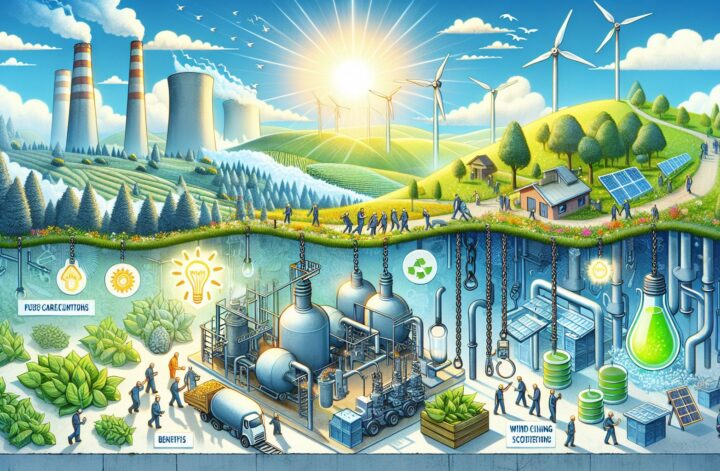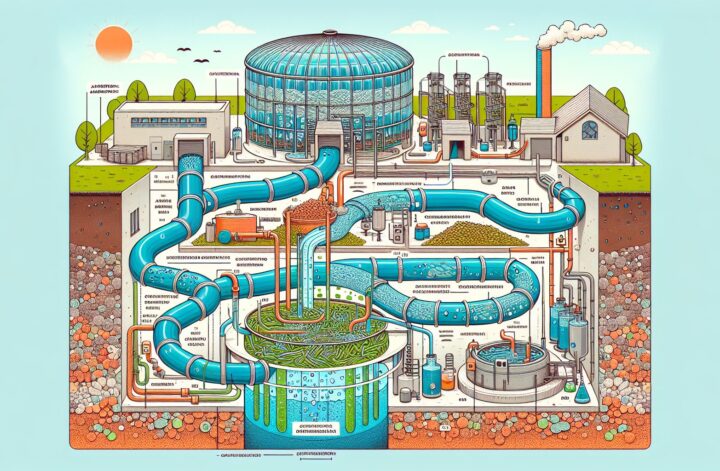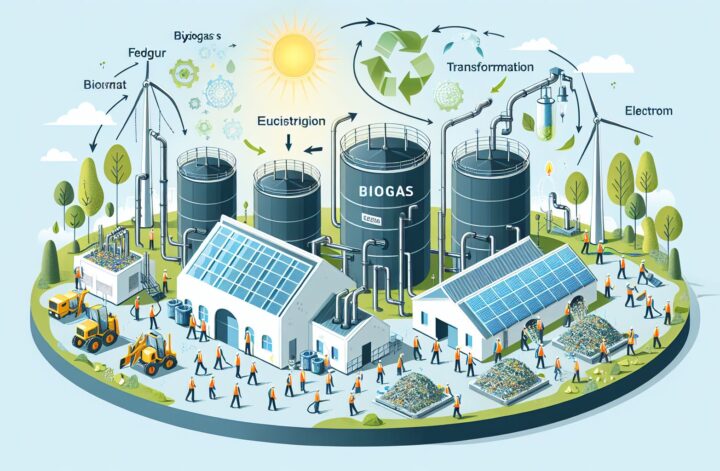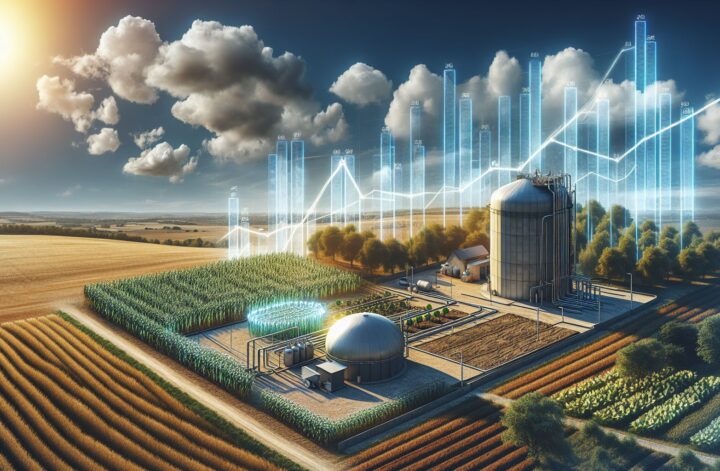In the age of dwindling natural resources and increasingly precarious climate change, the search for alternative, renewable sources of energy has never been more urgent. One such promising resource resides in the most unlikely of places: waste. More specifically, it’s in the form of biogas. This anaerobically produced mix of methane and carbon dioxide offers the potential to not only dispose of organic waste but also supply clean, renewable energy.
What is Biogas?
Biogas comprises primarily methane (CH4) and carbon dioxide (CO2): produced via a process of anaerobic digestion in the absence of oxygen[^1^]. The material that undergoes this process is biodegradable waste mainly from plant and animal origin – food waste, manure, sewage sludge, and even crop residues.
The Anaerobic Digestion Process
The biogas generation occurs through a four-phase anaerobic digestion process: Hydrolysis, Acidogenesis, Acetogenesis, and Methanogenesis.
-
Hydrolysis: Here, hydrolytic bacteria break down insoluble organic matter into simpler, soluble molecules like sugar, amino acids, and fatty acids.
-
Acidogenesis: In this phase, acidogenic or fermentative bacteria convert the resulting products into volatile fatty acids, alcohols, hydrogen, and carbon dioxide.
-
Acetogenesis: Acetogenic bacteria then convert these products into hydrogen, carbon dioxide, and acetates.
-
Methanogenesis: Finally, methanogenic archaea transform these products into methane, carbon dioxide, and water, which we identify as biogas[^2^].
Biogas Production: Techniques and Parameters
The key factors influencing the biogas production process include Organic Loading Rate (OLR), Hydraulic Retention Time (HRT), and the temperature.
Temperature is a substantial factor as it directly impacts the functioning of the microbes in the digester. The optimal temperature for the mesophilic digestion process is usually between 35 to 40 degrees Celsius, which is the most widely practiced method. On the other hand, thermophilic digestion occurs at much higher temperatures between 50 to 60 degrees Celsius, leading to faster rates of digestion and greater biogas yield, albeit being costlier and more complicated.
Taking into account the HRT (Hydraulic Retention Time) is equally crucial. This refers to the average length of time that the substrate remains within the digester. Short HRTs can result in an incomplete digestion process, while longer HRTs could hinder the digester’s capacity.
Lastly, the Organic Loading Rate (OLR) refers to the amount of substrate supplied to the digester per day. High OLRs could overload the microorganisms, resulting in a build-up of acids, causing a drop in pH, and eventually leading to process failure[^3^]. Therefore, it’s crucial to maintain an optimal OLR for a balanced and efficient digestion process.
Biogas Upgrading and Uses
Raw biogas needs to be treated or “upgraded” before use to remove traces of moisture, hydrogen sulfide, and carbon dioxide. Once purified, the resulting biomethane is comparable to natural gas and can be subsequently used for various purposes, including heating and electricity generation through Combined Heat and Power (CHP) units.
Biomethane can be injected into the gas grid or used as transportation fuel. The solid byproduct of anaerobic digestion, often referred to as biosolids or digestate, can be deployed as soil conditioner or fertilizer, thereby closing the loop of resource utilization[^2^].
Biogas: A Key Player in Greenhouse Gas Reduction
The use of biogas as a renewable energy source presents a great opportunity for mitigating greenhouse gas emissions. When produced from livestock manure, it prevents methane, a notorious and potent greenhouse gas, from being released into the atmosphere. Moreover, by replacing fossil fuels in heating applications and electricity generation, it further reduces carbon dioxide emissions.
Challenges in Biogas Production
Just like any other technology, biogas production also has its challenges. Inhibition of anaerobic digestion, ammonia toxicity, and sulfide toxicity are technical issues that can hamper its efficiency. Also, the trace element supplementation might be necessary for biogas production.
Final Thoughts
Biogas production is not just about energy generation but resource conservation and waste reduction. However, for it to be a viable renewable energy source on a global scale, further efficiency improvement, reduction in production costs and addressing the technical challenges are needed.
In conclusion, as we continue to look for ways to transition to a low-carbon economy, biogas emerges as much more than the sum of its parts: a potent energy source, a sustainable disposal mechanism, and a beacon of hope for a cleaner, greener future.
[^1^]: Biogas Association. (2008). Biogas – A Renewable Biofuel. https://www.biogas.psu.edu/pdfs/Biogas%20Handbook.pdf.
[^2^]: Environmental Protection Agency. (2014). Turning Waste into Energy: The Process of Anaerobic Digestion. https://www.epa.gov/sites/production/files/2014-12/documents/process_of_digestion.pdf.
[^3^]: Cohen, A., A. (2018). Anaerobic Digestion: Biogas Production and Odor Reduction. https://www.canr.msu.edu/news/anaerobic_digestion_biogas_production_and_odor_reduction.




